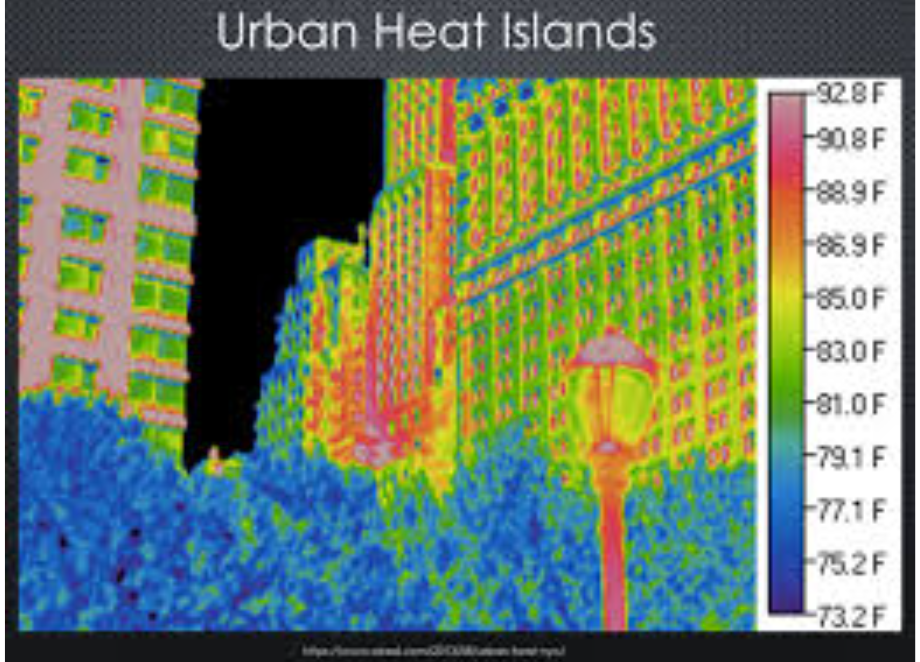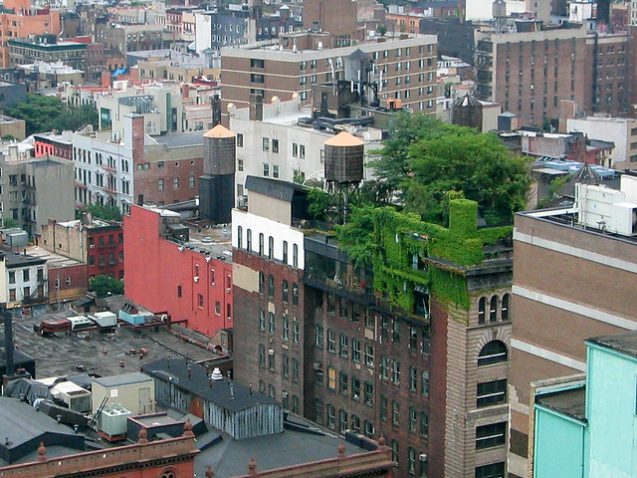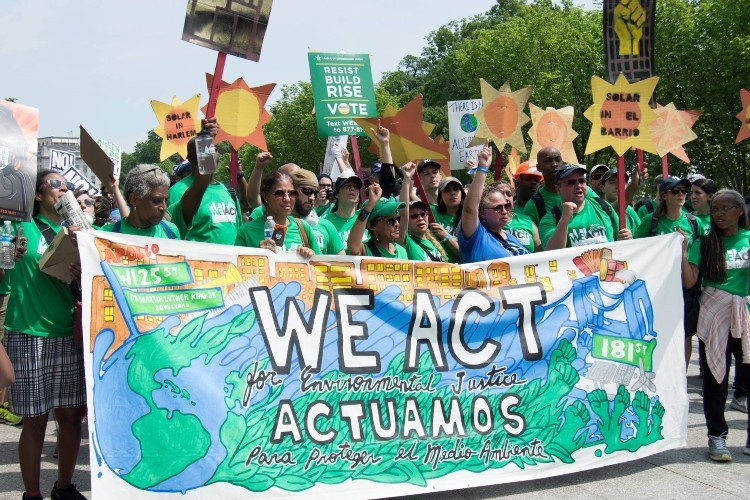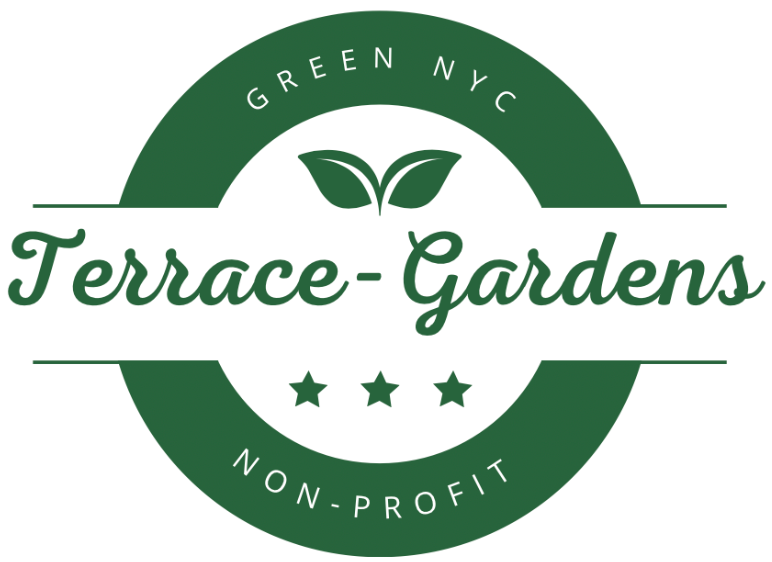Blog Post 3
The Mechanics of Urban Heat Islands
At its core, the UHI (Urban Heat Island) effect arises from the replacement of natural landscapes with materials that absorb and retain heat. Surfaces like asphalt, concrete, and metal prevalent in urban settings trap heat during the day and release it slowly at night, leading to elevated temperatures around the clock. In contrast, natural terrains with abundant vegetation facilitate cooling through shade and evapotranspiration, the process by which plants release water vapor, effectively reducing surrounding air temperatures (Central Park Conservancy, 2023).
A study highlighted by the Columbia Journalism School (2023) underscores the severity of this issue in New York City, revealing that the built environment can make temperatures nearly 10°F hotter for the average resident than they would be otherwise. This temperature amplification is among the highest observed in major U.S. cities.

Health Implications of Elevated Urban Temperatures
The health consequences of the UHI effect are alarming. Prolonged exposure to elevated temperatures can exacerbate respiratory and cardiovascular conditions, increase the risk of heat-related illnesses such as heatstroke, and contribute to higher mortality rates during heatwaves. Vulnerable populations, including the elderly, children, and individuals with pre-existing health conditions, are particularly at risk.
The New York City Department of Health and Mental Hygiene (n.d.) reports that, on average, more people die from extreme heat each year than from all other natural disasters combined. This statistic highlights the critical need for effective heat mitigation strategies in urban areas.
The Role of Green Spaces in Mitigating UHI
Green spaces serve as vital countermeasures against the UHI effect. Parks, tree-lined streets, and urban forests provide shade, facilitate cooling through evapotranspiration, and improve air quality by filtering pollutants. Central Park, for instance, acts as a significant cooling zone within Manhattan. Research from the Central Park Climate Lab (Central Park Conservancy, 2023) indicates that on the warmest days, the park’s woodlands can be up to 10°F cooler than surrounding street areas.
However, the distribution of green spaces in New York City is uneven, leading to disparities in temperature and health outcomes among different neighborhoods. Areas with limited vegetation experience more intense heat, underscoring the need for equitable urban planning that prioritizes green infrastructure across all communities.
Public Awareness and Community Initiatives
Addressing the UHI effect requires not only infrastructural changes but also heightened public awareness and community engagement. Initiatives like the Heat Story NYC project focus on the intersections of extreme heat, health, and social inequities (Heat Story NYC, n.d.). By mapping how extreme heat impacts are compounded by systemic issues such as racism and poverty, this project aims to make the consequences of UHI more visible and actionable.
Organizations like WE ACT for Environmental Justice have developed policy agendas to combat extreme heat. Their 2024 Extreme Heat Policy Agenda outlines strategies for creating a more proactive and equitable response to heat emergencies in urban settings (WE ACT for Environmental Justice, 2024).
Strategies for a Cooler, Healthier City
To effectively mitigate the UHI effect and its associated health risks, New York City can adopt several strategies:
Implementing Green Roofs and Walls: Encouraging the installation of vegetation on rooftops and building facades can enhance insulation, reduce heat absorption, and improve air quality. The NYC Parks Department maintains over 250,000 square feet of green roofs, exemplifying the potential of such initiatives. NYC Parks

Utilizing Reflective and Permeable Materials: Replacing traditional asphalt and concrete with reflective or permeable materials for pavements and rooftops can decrease heat absorption and facilitate water infiltration, further cooling urban areas.
Community Engagement and Education: Launching public awareness campaigns to educate residents about the UHI effect and promoting community-led greening projects can foster collective action and resilience.newyorker.com

Policy and Planning: Integrating heat mitigation into urban planning and building codes ensures that future developments contribute to a cooler urban environment. Policies that mandate green spaces in new developments and incentivize sustainable building practices are crucial.
In Conclusion The transformation of New York City’s landscapes has inadvertently intensified the Urban Heat Island effect, posing significant health risks to its residents. By understanding the mechanisms of UHI and implementing strategic interventions, ranging from expanding green spaces to enacting supportive policies, the city can mitigate these effects. Collaborative efforts involving government agencies, community organizations, and residents are essential to create a cooler, healthier, and more equitable urban environment for all New Yorkers.
Reference
Central Park Conservancy. (2023, August 14). How Central Park cools the (urban heat) island of Manhattan. Central Park NYC. Need for Trees: How Central Park Cools the (Urban Heat) Island of Manhattan
Columbia Journalism School. (2023, July 26). The ‘urban heat island’ effect is making New Yorkers hotter, study finds. Columbia Journalism. The ‘urban heat island’ effect is making New Yorkers hotter, study finds
Heat Story NYC. (n.d.). Heat Story NYC project. https://www.heatstorynyc.org/project.html
New York City Department of Health and Mental Hygiene. (n.d.). Extreme heat and your health: Data stories. Protecting New Yorkers from extreme heat
NYC Department of Parks & Recreation. (n.d.). Cooling our city: How NYC Parks fights climate change. NYC Parks. How NYC Parks Fights Climate Change: Cooling Our City
The New Yorker. (2023, July 3). As our cities grow hotter, how will we adapt? As Our Cities Grow Hotter, How Will We Adapt? | The New Yorker
WE ACT for Environmental Justice. (2024, June). 2024 extreme heat policy agenda. 2024 Extreme Heat Policy Agenda


